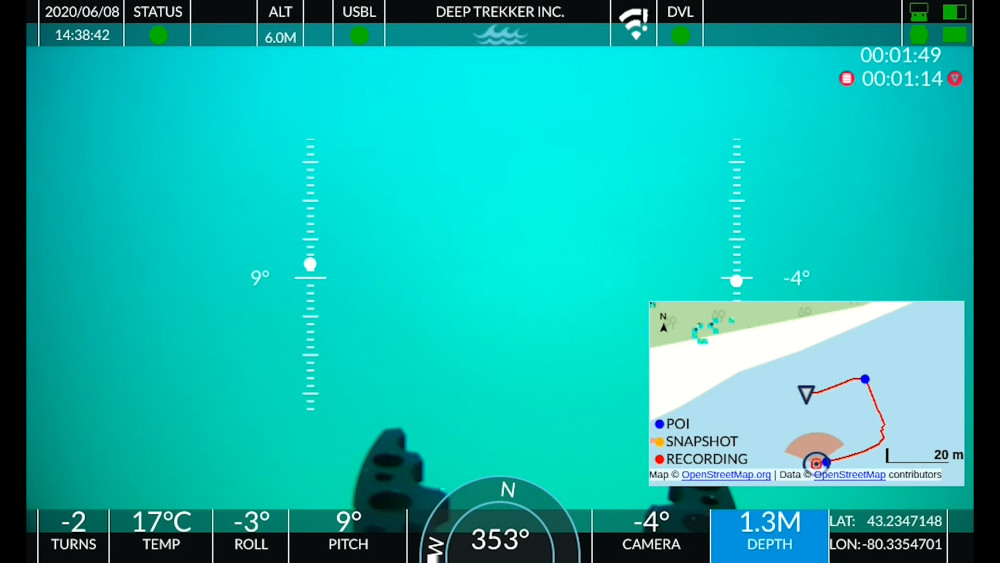Home › Forums › ROV › ROV Technical Discussions › ROV range finder question
- This topic has 6 replies, 5 voices, and was last updated 11 years, 8 months ago by
Savante.
-
AuthorPosts
-
March 29, 2011 at 8:09 am #4167
Kolbein Lunde
ParticipantWe have searched the web for a simple rangefinder (532nm) for use with ROV (measure distance between ROV and a target). We have found 3D laser scanners, but are more interested in a simple rangefinder. Does anyone of you know about vendors that provide this kind of equipment?
March 29, 2011 at 9:42 am #30676Andy Shiers
ParticipantHow accurate are you wanting this ?
Surely a sonar will give you the accuracy you want between ROV and object ?
🙂March 29, 2011 at 11:06 am #30677Kolbein Lunde
ParticipantHow accurate are you wanting this ?
Surely a sonar will give you the accuracy you want between ROV and object ?
🙂Hi
Tnx for replay. The problem is the spacing between the measurement target and the rest of the construction. I think the sonar beam will be to wide for our use. I see a normal Bosch terrestrial laser range finder have a accuracy of +-2mm so in this range would be great.March 29, 2011 at 5:43 pm #30678Savante
ParticipantWe have a green laser rangefinder, resolution is 0.1mm and it’s depth rated to 4000m with a high update rate. It’s not on the website yet.
Send an email to grant.thomson@savante.co.uk
March 30, 2011 at 6:17 am #30679Scott Beveridge
ParticipantSavante,
I’ve heard some good reviews of your gear. I’d like to check it all out sometime meself….
Nemi,
You may want to look into this as well…. clients – most of them with a bit of technical background – usually enjoy seeing stuff like this…
April 2, 2011 at 5:23 pm #30680Raymond
ParticipantI have never used it, and don’t know if it is suitable for your application, but Tritech make a camera with built-in laser measurung, it is called the Typhoon VMS.
April 15, 2013 at 10:37 am #30675Savante
ParticipantThere are a variety of methods you can use to perform laser rangefinding underwater. We have a dedicated system called PROXIS.
Alternatively, we have just released a series of underwater subsea laser image scaling systems (uses 4 or 5 individual laser pointers) under the brand APEX which is a competitor instrument to the device mentioned above.
APEX combines a digital stills camera with laser rangefinder and area measurement capability.
You can download a specifications sheet for an APEX from the following web-page;
http://www.savante.co.uk/2013/04/apex-lite-underwater-subsea-image-scaling-laser/
or direct link to .pdf
http://www.savante.co.uk/wp-content/uploads/2013/12/savante-apex-spec-sheet.pdf
The advantage of the APEX subsea underwater laser is that it dispenses with the need (and cost) of hiring multiple laser units and fabricating a bracket to mount them in a controlled and repeatable manner. HOWEVER, some of our other clients of ours have used multiple units of either;
Aquantum
http://www.savante.co.uk/2011/10/aquantum-underwater-laser-subsea-laser-rov-laser-diver-laser/or
Lumeneye
http://www.savante.co.uk/subsea-laser-modules/lumeneye-underwater-subsea-rov-laser-module/subsea lasers mounted in bespoke brackets manufactured from acetyl (Delrin). Taking photographs of the lasers, overlaid over the target and knowing the angles between the two lasers can then be used to determine range.
Some projects involving this may be reviewed at;
Subsea environmental seabed baseline surveys using subsea lasers
http://www.savante.co.uk/portfolio-items/atlantic-environmental-seabed-survey-using-subsea-lasers/Boulder surveys using subsea lasers (could also be used for pre-trenching or pre-lay surveys
http://www.savante.co.uk/portfolio-items/boulder-classification-using-subsea-underwater-laser-image-scaling/Marine fauna and flora seabed surveys using subsea lasers
http://www.savante.co.uk/portfolio-items/seabed-survey/ -
AuthorPosts
- You must be logged in to reply to this topic.



